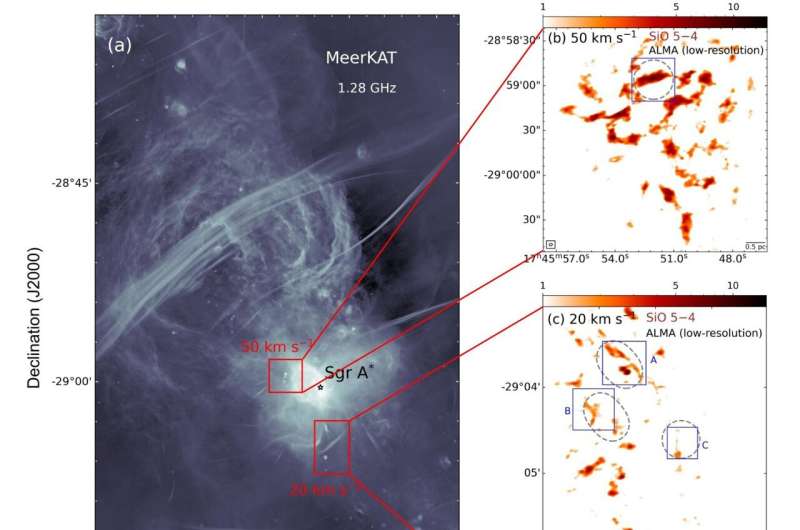In the turbulent heart of the Milky Way, near the supermassive black hole Sagittarius A*, astronomers have uncovered a surprising new phenomenon—slim, swirling gas filaments that behave like space tornadoes. Using the Atacama Large Millimeter/submillimeter Array (ALMA), a research team led by Kai Yang of Shanghai Jiao Tong University has captured the clearest view yet of this mysterious region, sharpening our understanding by a factor of 100. The discovery, published in Astronomy & Astrophysics, suggests these filaments play a critical role in circulating material throughout the galactic core, influencing the formation and destruction of interstellar clouds.
Unlike previously known dense gas filaments, these newly identified structures appear detached from star-forming regions, defying conventional models of molecular cloud behavior. Their precise origins remain unknown, but evidence points to violent shock waves as the likely cause, reshaping our understanding of how gas flows through the heart of our galaxy.
Space Tornadoes: A New Galactic Phenomenon?
The Central Molecular Zone (CMZ), a dense region surrounding the Milky Way’s core, has long been known for its chaotic gas clouds, where dust and molecular material constantly churn under the influence of gravitational forces, radiation, and supernova explosions. However, this latest study has revealed something entirely unexpected—long, thread-like filaments of silicon monoxide (SiO), a molecule known for tracing high-energy shock waves.
These slim filaments appear to be:
- Narrow and elongated, stretching across multiple parsecs
- Detached from known star-forming regions, ruling out outflows from young stars
- Moving in a coordinated way, indicating they are not random structures
- Unassociated with dust emission, unlike most known filaments
According to Xing Lu, a research professor at the Shanghai Astronomical Observatory and co-author of the study:
“We can envision these as space tornadoes: they are violent streams of gas, they dissipate quickly, and they distribute materials into the environment efficiently.”
These filaments appear to form when shock waves ripple through the galactic center, churning up interstellar material in a way that has never been observed before.

How Were These Galactic Tornadoes Detected?
To uncover these structures, the research team used ALMA’s high-resolution molecular line imaging, focusing on the SiO 5-4 rotational transition, which is only visible in high-energy shocked environments. They also detected complex organic molecules, including methanol (CH₃OH), acetonitrile (CH₃CN), and cyanoacetylene (HC₃N), further supporting the idea that these filaments are shock-induced structures.
According to Yichen Zhang, a professor at Shanghai Jiao Tong University, ALMA’s capabilities were essential in making this discovery:
“ALMA’s high angular resolution and extraordinary sensitivity allowed us to detect these filaments on a much finer 0.01-parsec scale, marking the surface where these shocks are actively working.”
This level of precision has transformed our view of the CMZ, suggesting a continuous cycle of gas depletion and replenishment.
